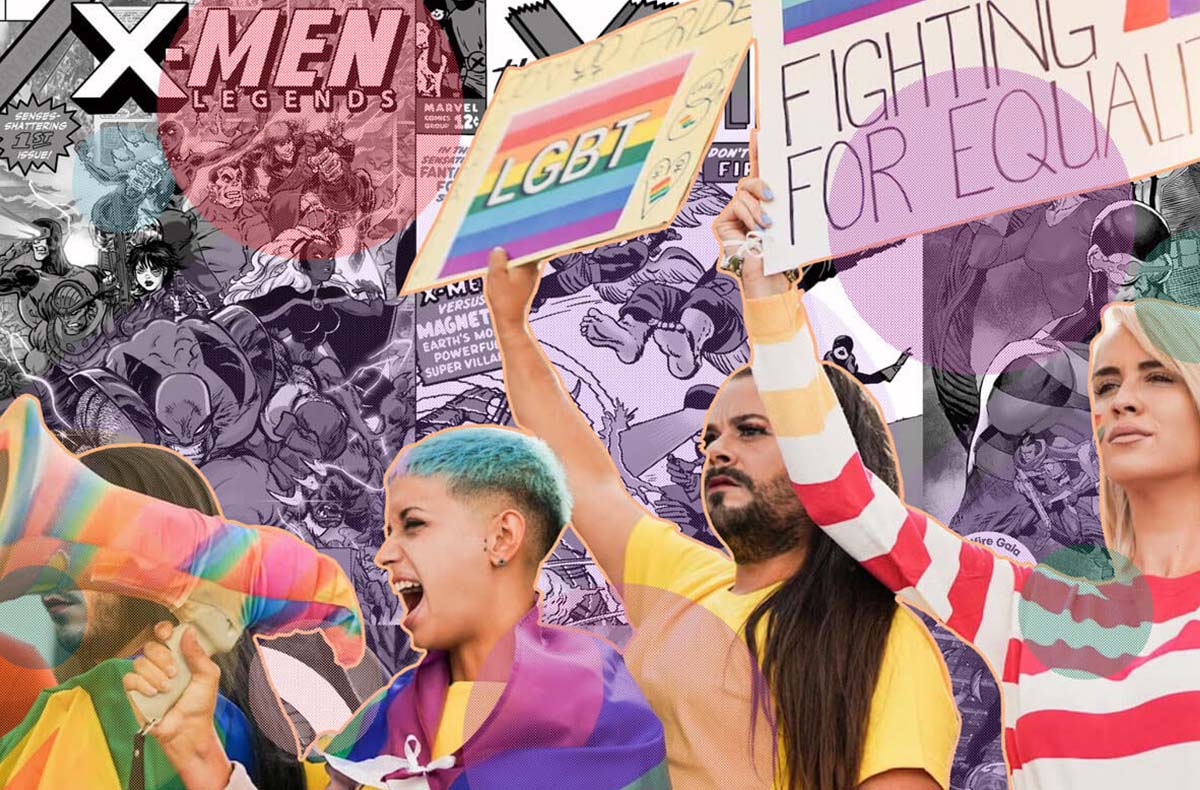
I was late to X-Men: The Animated Series, but I was a fan of the mutants before I started watching the shows. My real introduction came with X2: X-Men United in 2003 and then I saw the 2000 feature film shortly after. It wasn’t until the summer after seeing X-Men: The Last Stand that I started deep diving into the comics. Later, I watched the animated series episodes online. Where films have a finite amount of time to tell a tale, comic books and animated series can expand on a storyline.
I had opportunities to meet Brian Cox and James Marsden during the past year but didn’t get the chance to let them know what the X-Men meant to me. Thanks to an appearance by X-Men: The Animated Series voice actors at C2E2 2023, I finally had an opportunity to explain—well, at least to Cal Dodd, who stars as Logan/Wolverine. I did meet some of the other actors and got their autographs: Chris Potter (Gambit), Lenore Zann (Rogue), and Alison Sealy-Smith (Storm).
After missing out on getting a photo with Kevin Conroy during his two Wizard World Chicago appearances, I couldn’t turn down an opportunity to meet Cal and get my photo with him. After all, Wolverine has been a favorite of mine since first watching the film.
Cal’s work on the series would define Wolverine on screen for years and years to come, be it animation or live-action. During the C2E2 panel, he shared how Hugh Jackman prepped for the film by studying Cal’s work as Wolverine in X-Men: The Animated Series. Anyway, Cal signed a photo while sharing a Kevin Conroy story with me. I also told him what the X-Men have meant to me because of being transgender. I didn’t know if I’d ever have this opportunity again, but I knew I’d regret it if I didn’t tell him.
May 2023 will mark the 20th anniversary of X2’s release, but the film’s storyline still feels very pertinent with what’s happening today. In the film, Colonel William Stryker (Brian Cox) wants to destroy the mutants by building his own version of Cerebro, a device that Professor Charles Xavier (Patrick Stewart) created to track mutants. Stryker’s son, Jason (Michael Reid McKay), is a mutant who Stryker previously sent to the Xavier Institute in hopes of finding a cure. There was no cure and he ended up blaming his parents for being a mutant, driving his mother to suicide and the elder Stryker into being a genocidal maniac.
The X-Men were first created in 1963, but Chris Claremont’s 17-year run as a writer—starting in 1975—would define who they are for present-day audiences. Claremont’s stint gave us the Dark Phoenix Saga, and Days of Future Past. The run made Wolverine a fan favorite. It was Claremont who also made Magneto a survivor of the Holocaust. Despite the Jewish history behind our favorite superheroes, not many of them are Jewish—but that’s a rant for another day.
Stan Lee created the characters. As the late Marvel Comics legend describes it: “I took the cowardly way out. I said I’m just going to say that they were born that way.”
The mutants were born with genetic powers that they kept secret from the outside world. Lee had the students attend Xavier’s School for Gifted Youngsters. The X-Men base of operations would later be known as the Xavier Institute for Higher Learning. There have been other names through the years, but the mansion itself had been in Professor Xavier’s family for generations. While the X-Men’s enemies will always try to find a way to breach the facility, it’s a safe space for mutants to be who they were always meant to be.
The original comics were written during the height of the Civil Rights movement. Where Charles Xavier’s X-Men represented the Dr. Martin Luther King Jr. line of thinking, Erik Lehnsherr/Magneto and his Brotherhood of Mutants represented the Malcolm X viewpoints. Through the years and especially during Claremont’s time, they’ve come to symbolize the LGBTQ movement, too. After all, the mutants were born this way, no different than anyone who is LGBTQ. Even in X2, a film that heavily draws on X-Men: God Loves, Man Kills (1982), there’s a line in the sequel movie where Bobby Drake/Iceman’s (Shawn Ashmore) parents ask him: “Have you tried not being a mutant?”
Finding a mutant cure played a prominent role in X-Men: The Last Stand. The idea of a cure can also be found in the comics and in X-Men: The Animated Series. The Gifted arc kicked off the Astonishing X-Men run penned by Joss Whedon and drawn by John Cassaday. Rogue takes the cure in the film, but Magneto (Ian McKellan), who was forced to take the cure, is shown to be getting his powers back towards the end of the film. It’s a stark difference from the character’s decision in the animated series. In the series, Rogue heads to Muir Island in The Cure, the ninth episode of the first season, but eventually comes to realize she can do more good by keeping her powers.
One can look at the mutant cure as being a metaphor for conversion therapy. It is an inhumane treatment for its subjects. In as much as parents try to use such therapy to become cishet, parents want the same for their mutant children to repress the gene. But such repression will not work.
Even today, politicians are going against WPATH transgender healthcare standards and forcing trans kids to de-transition. They can take kids off puberty blockers, but those kids are still transgender and blood will be on politicians’ hands when those kids end up killing themselves because of the rejection. Take it from me, no matter how many times I lied to myself at night when I went to bed, nothing ever worked. There is no cure for being LGBTQ and never will be.



